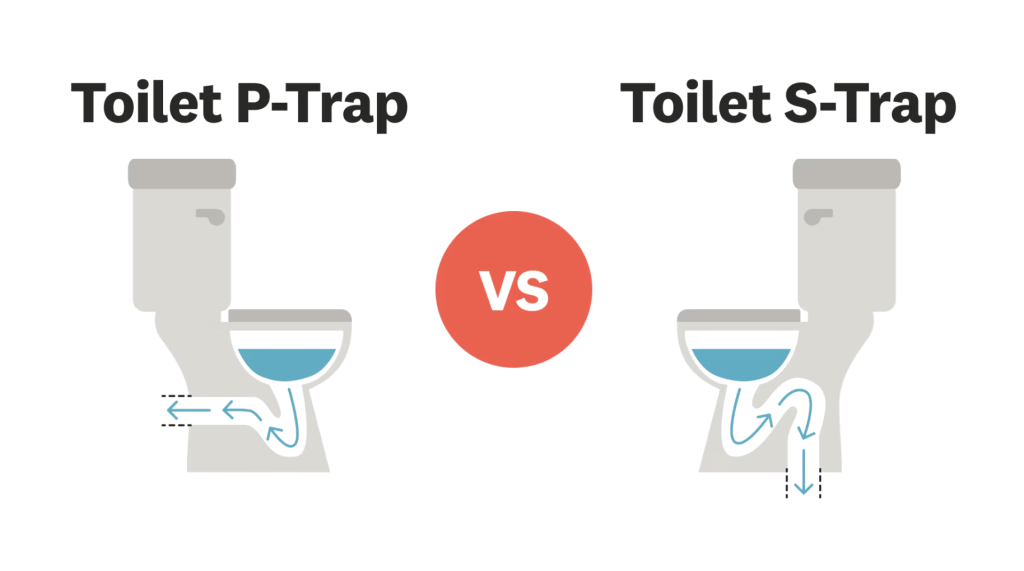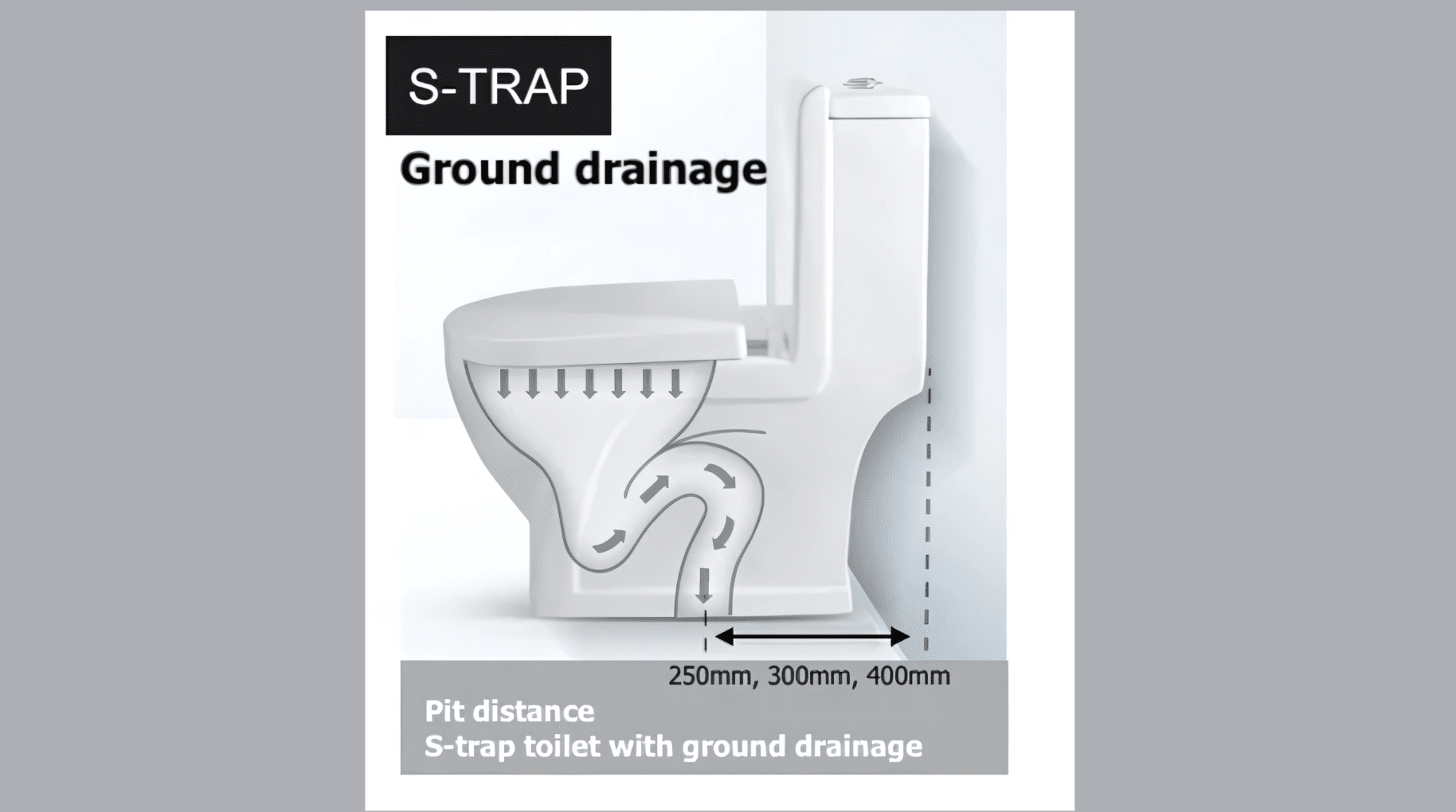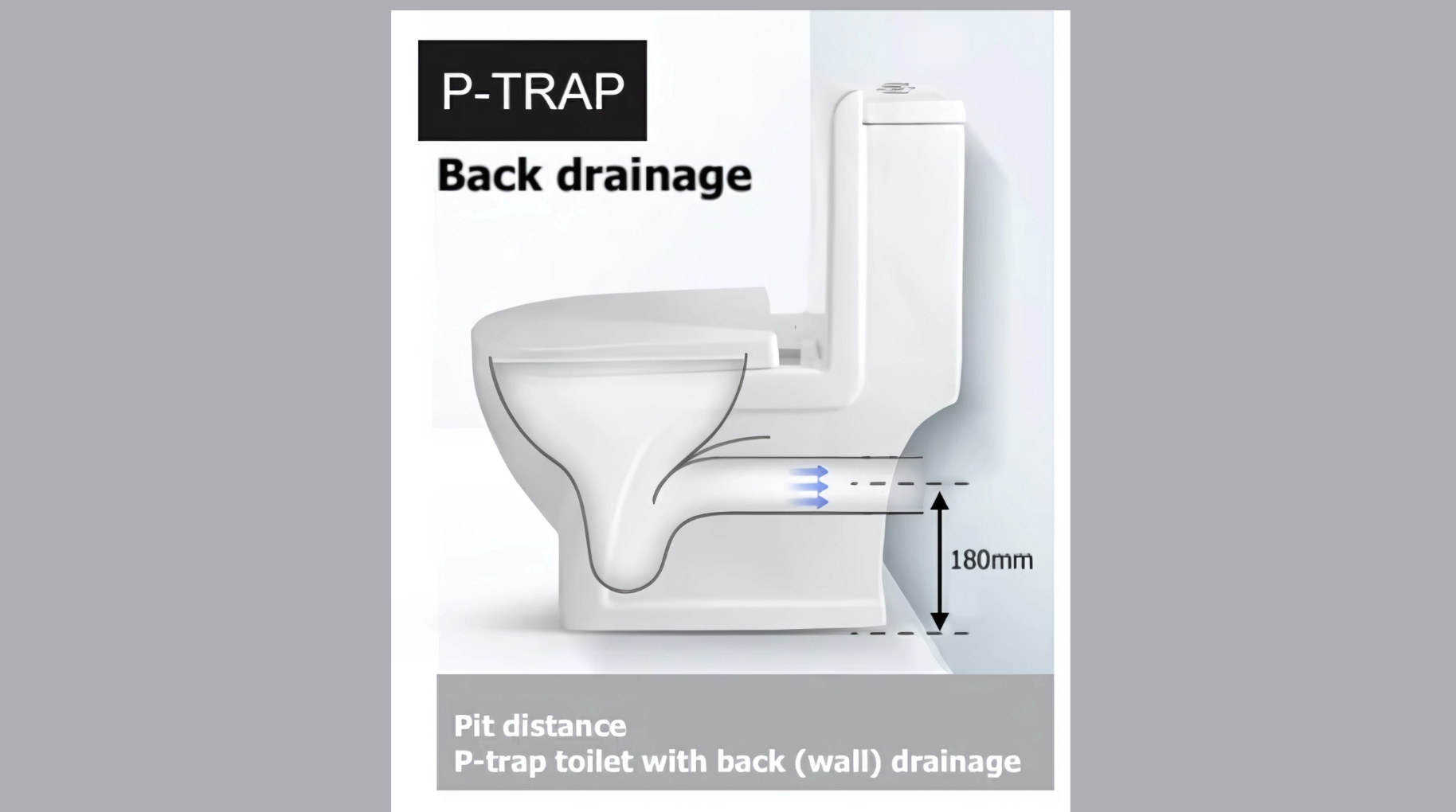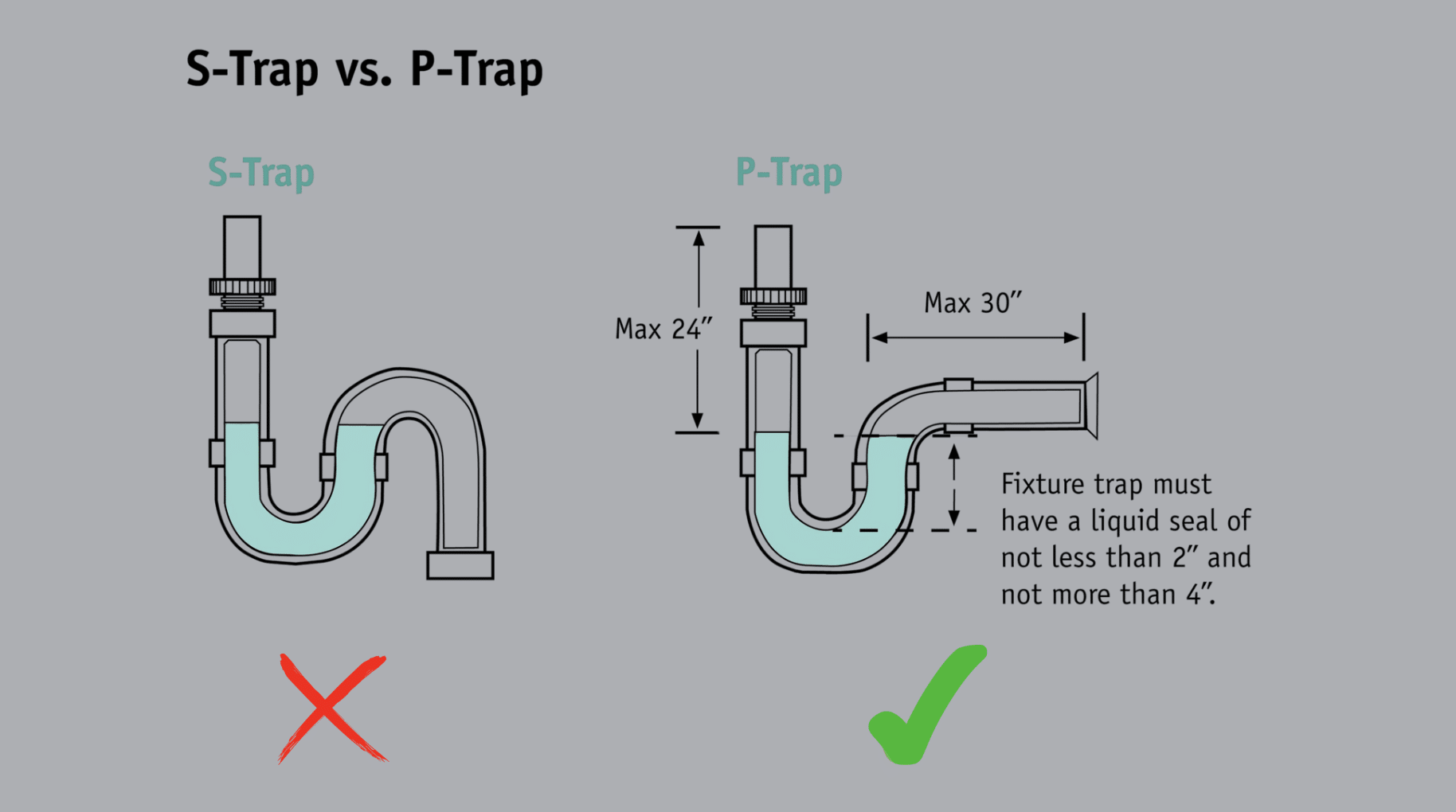Have you noticed bad smells coming from your drains? Your plumbing trap might be failing. Many homeowners don’t know that the wrong trap can cause serious issues in their homes.
Want cleaner air and safer plumbing? The choice between S traps and P traps matters more than you think. These small pipe parts stop harmful sewer gases from entering your living spaces.
The right trap can make your home safer and help you pass building inspections. The wrong one might break local codes and put your family at risk.
Ready to pick the perfect trap for your plumbing needs? This guide will show you the key differences between S traps and P traps, helping you make a smart choice for your home.
What Is a Plumbing Trap?
A plumbing trap is a vital component in any drainage system designed to maintain hygiene and safety within your home. It’s a curved section of pipe, typically installed beneath sinks, showers, bathtubs, or floor drains, that plays a crucial role in preventing harmful gases from entering your living space.
Why It Matters: Blocking Sewer Gases
One of the most important functions of a plumbing trap is to block sewer gases—like methane, hydrogen sulfide, and ammonia—from traveling back up through the drain. These gases originate from decomposing waste in the sewer line and can be not only unpleasant but also dangerous to inhale over time.
Without a plumbing trap in place, these gases could easily make their way into kitchens, bathrooms, or basements, leading to serious health hazards and offensive odors.
What Is an S Trap and Why It’s Falling Out of Favor
The S trap is a traditional type of plumbing trap that gets its name from its distinctive shape, which resembles the letter “S” when viewed from the side.
Though once widely used in residential plumbing, S-traps have become less common in modern construction due to certain functional drawbacks and evolving building codes.
Design and Structure
The S trap consists of two curved sections of pipe connected in a way that mimics an “S” shape. Water flows down from the sink or fixture through the first curve, then loops back up slightly before exiting vertically down into the floor drain.
This vertical orientation is a key feature: unlike P-traps that connect horizontally into the wall, S-traps connect directly to a drain in the floor. This makes them especially suitable for pedestal sinks, floor-mounted toilets, or fixtures that are not located near a wall.
Common Applications
S-traps were a go-to solution in older homes and plumbing systems, particularly where floor drainage was more accessible or where wall vents were difficult to install. You’ll often still find them in:
- Vintage bathroom and kitchen sinks
- Freestanding or pedestal fixtures
- Certain mobile homes and off-grid installations
However, in newer builds, they are typically avoided or replaced due to building code restrictions.
Pros and Cons of S-Trap Plumbing
| Pros | Cons |
|---|---|
| Works with floor drains | Often violates modern plumbing codes |
| Space-saving vertical design | Prone to losing the water seal due to siphoning |
| Easier to install in older homes | Can allow sewer gases to enter your home |
| No wall connection needed | Poor venting capability |
| Less expensive than adding wall pipes | May require frequent maintenance |
| Simple to replace with a similar S-trap | Can cause slow draining |
| Familiar to older homeowners | Not allowed in new construction |
| Can fit in tight spaces | May cause gurgling sounds |
| Works without extensive remodeling | Requires extra steps to prevent siphoning |
| Available for older-style repairs | May need replacement during home inspection |
While S traps were once the norm, they have several drawbacks that make them less suitable for modern plumbing systems.
Why the P-Trap Is the Standard in Today’s Plumbing
The P-trap is the modern standard in residential and commercial plumbing, known for its reliable performance and compliance with building codes. Its name comes from its shape, which resembles the letter “P” when oriented horizontally.
Design and Structure
The P trap features a distinctive configuration: a U-shaped bend followed by a straight horizontal section that leads into a wall drain. When viewed from the side, this creates a profile similar to a sideways “P.”
One of the key advantages of this design is that the outlet pipe runs horizontally into the wall, rather than vertically into the floor. This enables more effective integration with modern venting systems, which are crucial in maintaining the integrity of the water seal and preventing suction during drainage.
Common Applications
P-traps are now the default choice in nearly all new construction and remodeling projects. You’ll find them installed beneath:
- Kitchen and bathroom sinks
- Bathtubs and showers
- Utility basins
- Washing machines
Because they meet modern plumbing code requirements, they’re preferred in both residential and commercial applications.
Pros and Cons of P-Trap Plumbing Traps
| Pros | Cons |
|---|---|
| Easy to install for DIY projects | Requires more space under fixtures than some alternatives |
| Widely available in most hardware stores | Can freeze in very cold spaces if not insulated |
| Simple to clean when clogs happen | May lose water seal in rarely used fixtures |
| Meets most building codes worldwide | Not always the best choice for tight spaces |
| Effective at catching dropped items | Metal versions can corrode over time |
| Compatible with most sink types | Plastic versions may crack if over-tightened |
| Maintains reliable water seal when properly vented | Not suitable for floor drains (where S-traps are used) |
| Affordable compared to specialty traps | Less visually appealing in exposed installations |
| Parts are standardized for easy replacement | Can be damaged by harsh chemical cleaners |
| Works well with standard venting systems | Requires proper slope for effective drainage |
Key Differences Between S-Trap and P-Trap
1. Orientation and Installation
P-traps connect to wall drains with a horizontal outlet pipe that creates a “P” shape when viewed from the side. This design works well under sinks and fixtures with wall-mounted drains.
S-traps connect to floor drains and form an “S” shape as they curve down twice. The different shapes serve specific installation needs based on your home’s plumbing layout.
2. Venting Requirements
P-traps need proper venting to work correctly. The vent allows air to enter the system, which helps water flow freely while keeping the water seal intact.
S-traps often lack this venting connection, which creates problems. Without venting, S-traps can lose their water seal through siphoning when water rushes down the drain.
3. Building Code Compliance
P-traps are approved for new installations because of their reliable function when properly vented.
S-traps fail to meet current standards in many areas. Plumbers now rarely install S-traps in new construction, though they still exist in older homes.
4. Risk of Siphoning
S-traps have a much higher risk of siphoning, which happens when flowing water pulls the entire water seal out of the trap. This breaks the seal that blocks sewer gases. The second downward curve in an S-trap creates this siphoning effect.
P-traps, with their horizontal outlet and proper venting, resist siphoning and keep the water seal in place.
When Replacement Makes Sense
If your home has S-traps, you might consider replacing them with P-traps, especially if you notice:
- Bad smells coming from drains
- Gurgling sounds when water drains
- Slow drainage issues
- Planning a bathroom or kitchen updat
What is Better, S-Trap or P-Trap?
Choosing between an S trap and a P trap isn’t just a matter of preference—it’s a decision that impacts the effectiveness, safety, and legality of your plumbing system. While both serve the same fundamental purpose, several key factors should guide your decision.
Local Plumbing Codes
S-traps are prohibited due to their susceptibility to siphoning and lack of integrated venting. Using a non-compliant trap could result in:
- Failed inspections
- Costly retrofits
- Legal issues if the property is sold or rented
In contrast, P traps are typically code-compliant and preferred by inspectors for both residential and commercial projects.
Ventilation System Availability
Proper venting is crucial for maintaining the water seal and preventing sewer gases from entering your space. Here’s how each trap fares:
-
S-Trap: Often lacks a vent, and retrofitting it with one can be complex or impractical, especially in existing construction.
-
P-Trap: Designed to work with a venting system. If your plumbing includes a vent stack or air admittance valve, the P-trap will integrate smoothly and perform reliably.
If your setup can’t easily accommodate venting, consult a plumber for solutions—some alternatives (like AAVs or loop vents) may be viable with a P-trap.
Fixture Type and Location
The physical configuration of your fixture also influences the best trap choice:
-
Use an S-trap only in rare, floor-mounted situations where wall access is limited, and only if allowed by code and proper venting can be added.
-
Use a P-trap for most sink, bathtub, and appliance installations, especially those mounted against a wall with access to a horizontal drain and venting.
In almost every case, the P trap is the smarter and safer choice. It provides better long-term performance, meets modern code requirements, and is less prone to functional issues. Unless you have a specific structural limitation and local code approval, it’s best to avoid S traps altogether.
Conclusion
Now you understand the key differences between S-traps and P-traps. For most modern homes, P-traps are the better option. They maintain a reliable water seal, prevent siphoning, and meet current building codes.
If your home has old S-traps, consider replacing them when you notice drain odors or slow drainage. Keep in mind that local plumbing codes often require P-traps for new installations.
The right trap does more than just block sewer gases—it helps your entire plumbing system work properly. Take time to check what’s under your sinks and make updates if needed.
Want to learn more about plumbing essentials? Leave a comment below about your experiences with different traps, or share this article with someone planning a bathroom update.
























